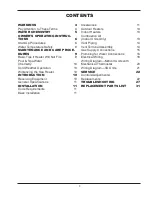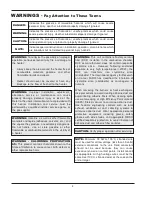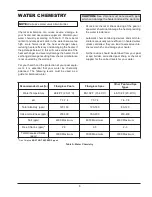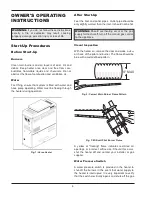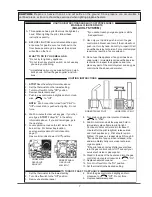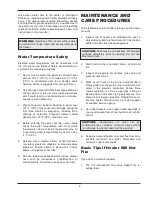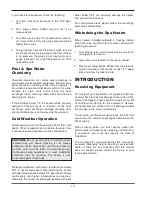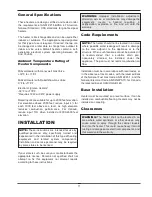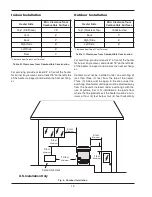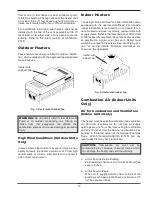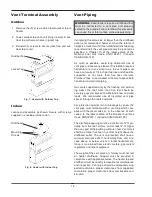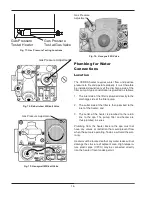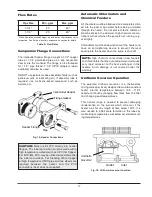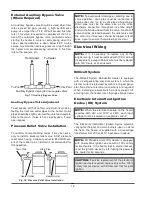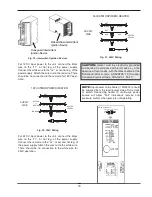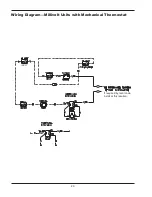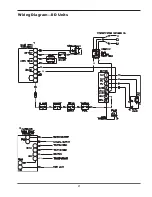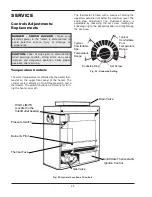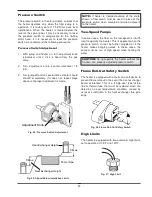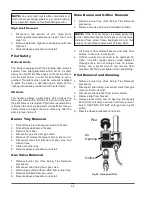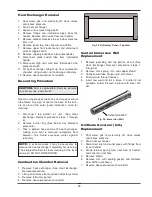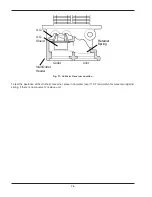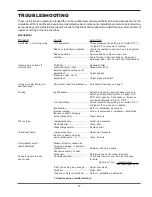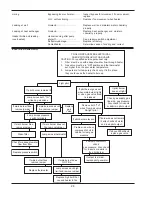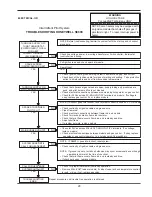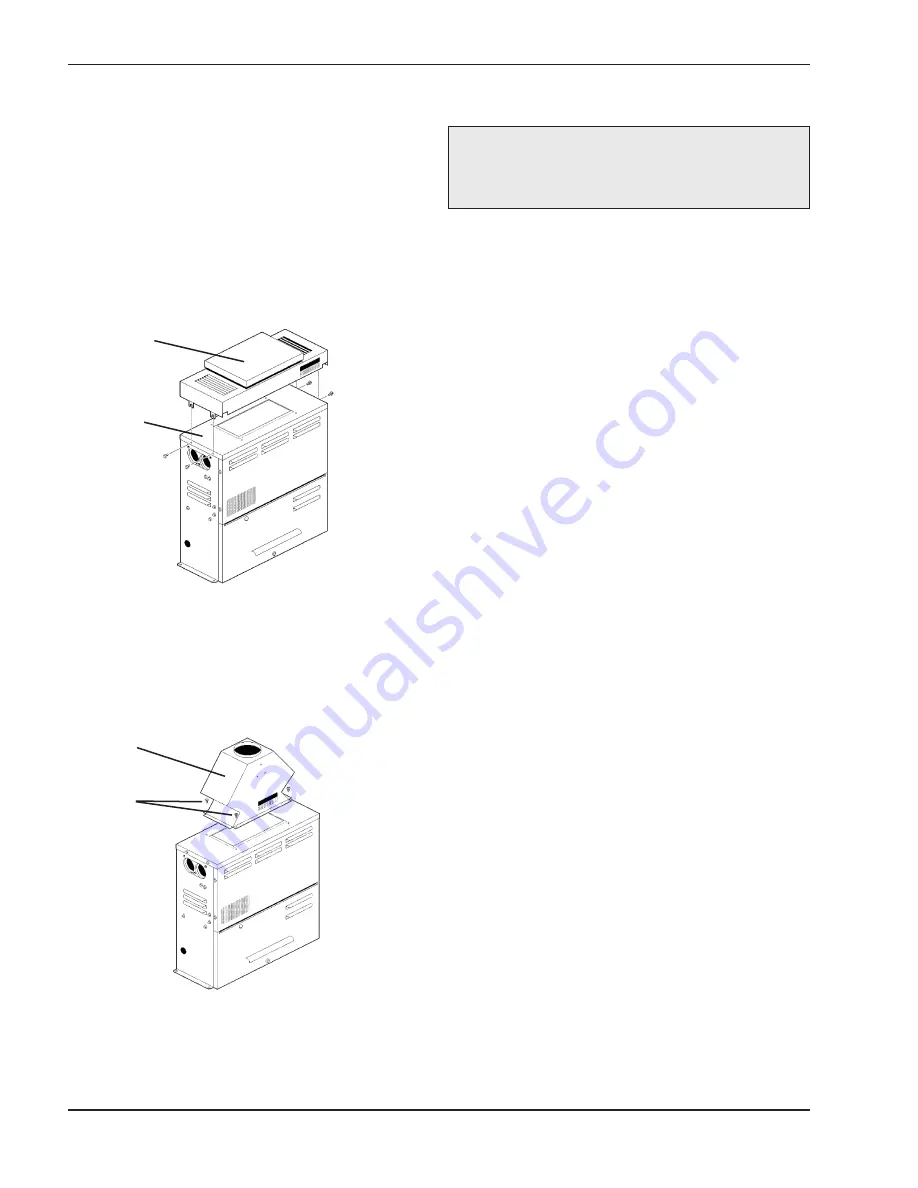
14
Vent Terminal Assembly
Outdoor
1. Remove the (4) screws which fasten jacket top to
heater.
2. Lower outdoor top onto unit lining up slots in out-
door top with screw holes in jacket top.
3. Reinstall (4) screws to secure jacket top and out-
door top to unit.
Indoor
Locate and assemble as shown. Secure with screws
supplied in envelope inside carton.
Outdoor Top
Jacket Top
Fig. 7: Heater with Outdoor Top
Drafthood
Mounting
Screws
Fig. 8: Heater with Indoor Top
Vent Piping
Vent piping the same size or larger than the drafthood
outlet is recommended, however, when the total vent
height is at least ten (10) feet (drafthood relief opening
to vent terminal), the vent pipe size may be reduced as
specified in Chapter 10 of the latest edition of the
National Fuel Gas Code, ANSI Z223.1 (Canada-
CAN/CGA B-149).
As much as possible, avoid long horizontal runs of
vent pipe and too many elbows. If installation requires
horizontal or or non-vertical runs, the vent pipe must
have a minimum of 1/4 inch per foot rise and should be
supported at not more than five foot intervals.
Plumbers' tape, criss-crossed, will serve to space both
horizontal and vertical piping.
Gas vents supported only by the flashing and extend-
ing above the roof more than five feet should be
securely guyed or braced to withstand snow and wind
loads. We recommend use of insulated vent pipe
spacer through the roofs and walls.
For protection against rain or blockage by snow, the
vent pipe must terminate with a vent cap which com-
plies with the local codes or, in the absence of such
codes, to the latest edition of the National Fuel Gas
Code, ANSI Z223.1 (Canada-CAN/CGA B-149).
The discharge opening must be a minimum of 2 ft. ver-
tically from the roof surface and at least 2 ft. higher
than any part of the building within ten feet. Vent stack
shall be at least five feet in vertical height above the
drafthood outlet. The vent cap location shall have a
minimum clearance of 4 ft. horizontally from, and in no
case above or below, unless a 4-foot horizontal dis-
tance is maintained from electric meters, gas meters
regulators and relief equipment.
The weight of the vent stack or chimney must not rest
on heater drafthood. Support must be provided in
compliance with applicable codes. The heater top and
drafthood must be readily removable for maintenance
and inspection. Vent pipe should be adequately sup-
ported to maintain proper clearances from supported
to maintain proper clearances from combustible con-
struction.
WARNING:
Indoor boilers require a drafthood that
must be connected to a vent pipe and properly
vented to the outside. Failure to follow this procedure
can cause fire or fatal carbon monoxide poisoning.



